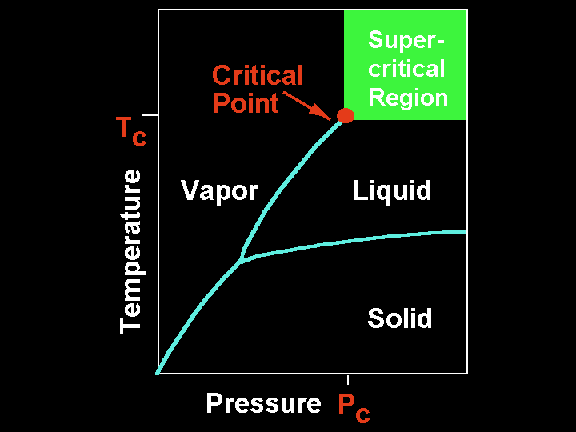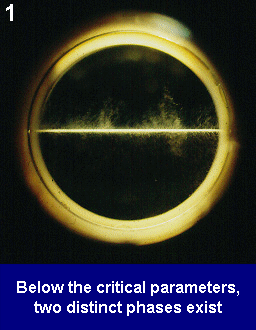Supercritical fluids are highly compressed gases which combine properties of gases and liquids in an intriguing manner. Fluids such as supercritical xenon, ethane and carbon dioxide offer a range of unusual chemical possibilities in both synthetic and analytical chemistry.
The definition of a supercritical fluid usually begins with a phase diagram, which defines the critical temperature and pressure of a substance. (CO2 ; Tc = 31.1°C, Pc = 73.8 bar).

|

|
Supercritical fluids have solvent power similar to a light hydrocarbon for most solutes. However, fluorinated compounds are often more soluble in scCO2 than in hydrocarbons.
Solubility increases with increasing density (i.e. with increasing pressure). Rapid expansion of supercritical solutions leads to precipitation of a finely divided solid. This is a key feature of our continuous reactions.
The fluids are completely miscible with permanent gases (e.g. N2 or H2) and this leads to much higher concentrations of dissolved gases than can be achieved in conventional solvents. This effect has been exploited in both organometallic reactions and hydrogenation
Supercritical water is rather different from CO2. It is described on a separate page.
Video recorded and produced by Brady Haran. If video does not display click on yellow bar at top of screen and allow blocked content - Youtube ActiveX control.
Further Reading
- Supercritical Fluid Extraction: Principles & Practice, McHugh, M. A., Krukonis, V. J. ; Butterworth-Heinemann, Boston, 1994.
- “New Directions in Inorganic and Metal-Organic Coordination Chemistry in Supercritical Fluids”, J. A. Darr and M. Poliakoff, Chem. Rev.1999, 99, 495-541.
- “Supercritical and Near-Critical CO2 in Green Chemical Synthesis and Processing” E. J. Beckman, J. Supercritical Fluids 2004, 28 (2-3): 121-191
- The website at Phasex gives a good introduction to the properties of supercritical fluids.
